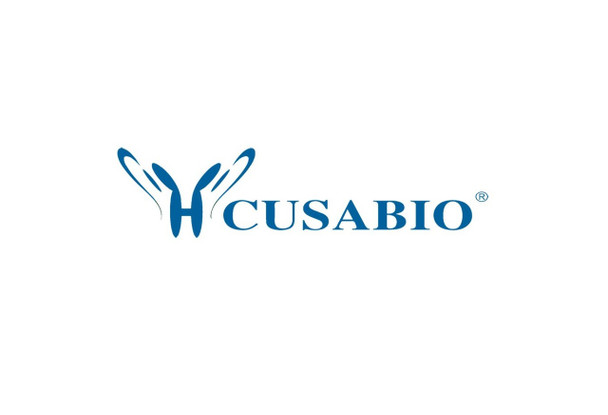Cusabio Influenza A virus Recombinants
Recombinant Influenza A virus Matrix protein 2 (M) | CSB-CF389902ILU
- SKU:
- CSB-CF389902ILU
- Availability:
- 18 - 23 Working Days
Description
Recombinant Influenza A virus Matrix protein 2 (M) | CSB-CF389902ILU | Cusabio
Alternative Name(s): M; M2; Matrix protein 2; Proton channel protein M2
Gene Names: M
Research Areas: Neuroscience
Organism: Influenza A virus (strain A/USA:Phila/1935 H1N1)
AA Sequence: MSLLTEVETPIRNEWGCRCNGSSDPLVIAASIIGILHLILWILDRLLFKCIYRRFKYGLKRGPSTEGVPESMREEYRKEQQSAVDADDGHFVNIEPE
Source: in vitro E.coli expression system
Tag Info: N-terminal 6xHis-tagged
Expression Region: 1-97aa
Sequence Info: Full Length
MW: 15.1 kDa
Purity: Greater than 90% as determined by SDS-PAGE.
Relevance: Forms a proton-selective ion channel that is necessary for the efficient release of the viral genome during virus entry. After attaching to the cell surface, the virion enters the cell by endocytosis. Acidification of the endosome triggers M2 ion channel activity. The influx of protons into virion interior is believed to disrupt interactions between the viral ribonucleoprotein (RNP), matrix protein 1 (M1), and lipid bilayers, thereby freeing the viral genome from interaction with viral proteins and enabling RNA segments to migrate to the host cell nucleus, where influenza virus RNA transcription and replication occur. Also plays a role in viral proteins secretory pathway. Elevates the intravesicular pH of normally acidic compartments, such as trans-Golgi network, preventing newly formed hemagglutinin from premature switching to the fusion-active conformation (By similarity).
Reference: The NIAID Influenza Genome Sequencing Consortium Submitted (MAR-2007)
Storage: The shelf life is related to many factors, storage state, buffer ingredients, storage temperature and the stability of the protein itself. Generally, the shelf life of liquid form is 6 months at -20?/-80?. The shelf life of lyophilized form is 12 months at -20?/-80?.
Notes: Repeated freezing and thawing is not recommended. Store working aliquots at 4? for up to one week.
Function: Forms a proton-selective ion channel that is necessary for the efficient release of the viral genome during virus entry. After attaching to the cell surface, the virion enters the cell by endocytosis. Acidification of the endosome triggers M2 ion channel activity. The influx of protons into virion interior is believed to disrupt interactions between the viral ribonucleoprotein (RNP), matrix protein 1 (M1), and lipid bilayers, thereby freeing the viral genome from interaction with viral proteins and enabling RNA segments to migrate to the host cell nucleus, where influenza virus RNA transcription and replication occur. Also plays a role in viral proteins secretory pathway. Elevates the intravesicular pH of normally acidic compartments, such as trans-Golgi network, preventing newly formed hemagglutinin from premature switching to the fusion-active conformation.
Involvement in disease:
Subcellular Location: Virion membrane, Host apical cell membrane, Single-pass type III membrane protein
Protein Families: Influenza viruses matrix protein M2 family
Tissue Specificity:
Paythway:
Form: Liquid or Lyophilized powder
Buffer: If the delivery form is liquid, the default storage buffer is Tris/PBS-based buffer, 5%-50% glycerol. If the delivery form is lyophilized powder, the buffer before lyophilization is Tris/PBS-based buffer, 6% Trehalose, pH 8.0.
Reconstitution: We recommend that this vial be briefly centrifuged prior to opening to bring the contents to the bottom. Please reconstitute protein in deionized sterile water to a concentration of 0.1-1.0 mg/mL.We recommend to add 5-50% of glycerol (final concentration) and aliquot for long-term storage at -20?/-80?. Our default final concentration of glycerol is 50%. Customers could use it as reference.
Uniprot ID: A4GCM0
HGNC Database Link: N/A
UniGene Database Link: N/A
KEGG Database Link: N/A
STRING Database Link: N/A
OMIM Database Link: N/A









